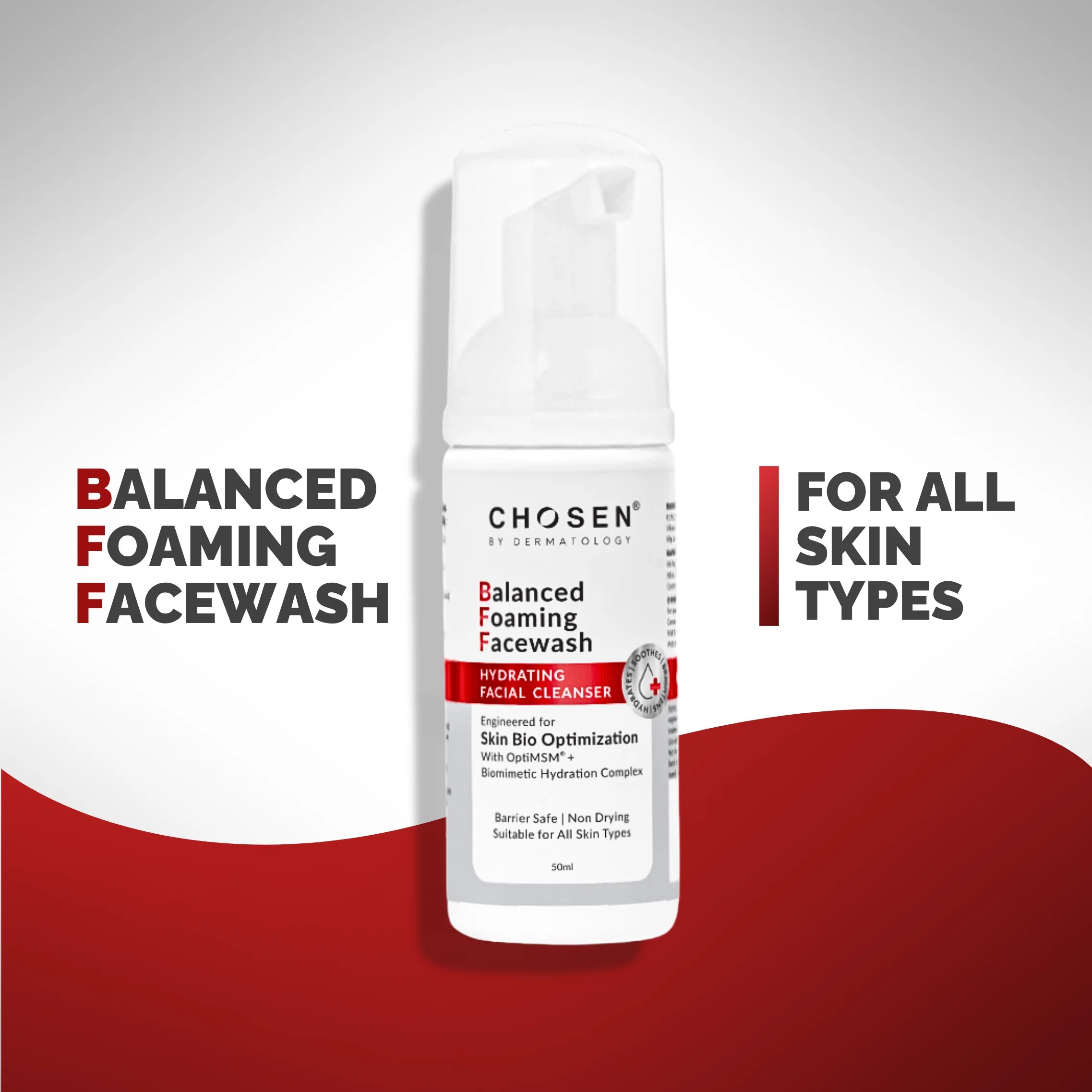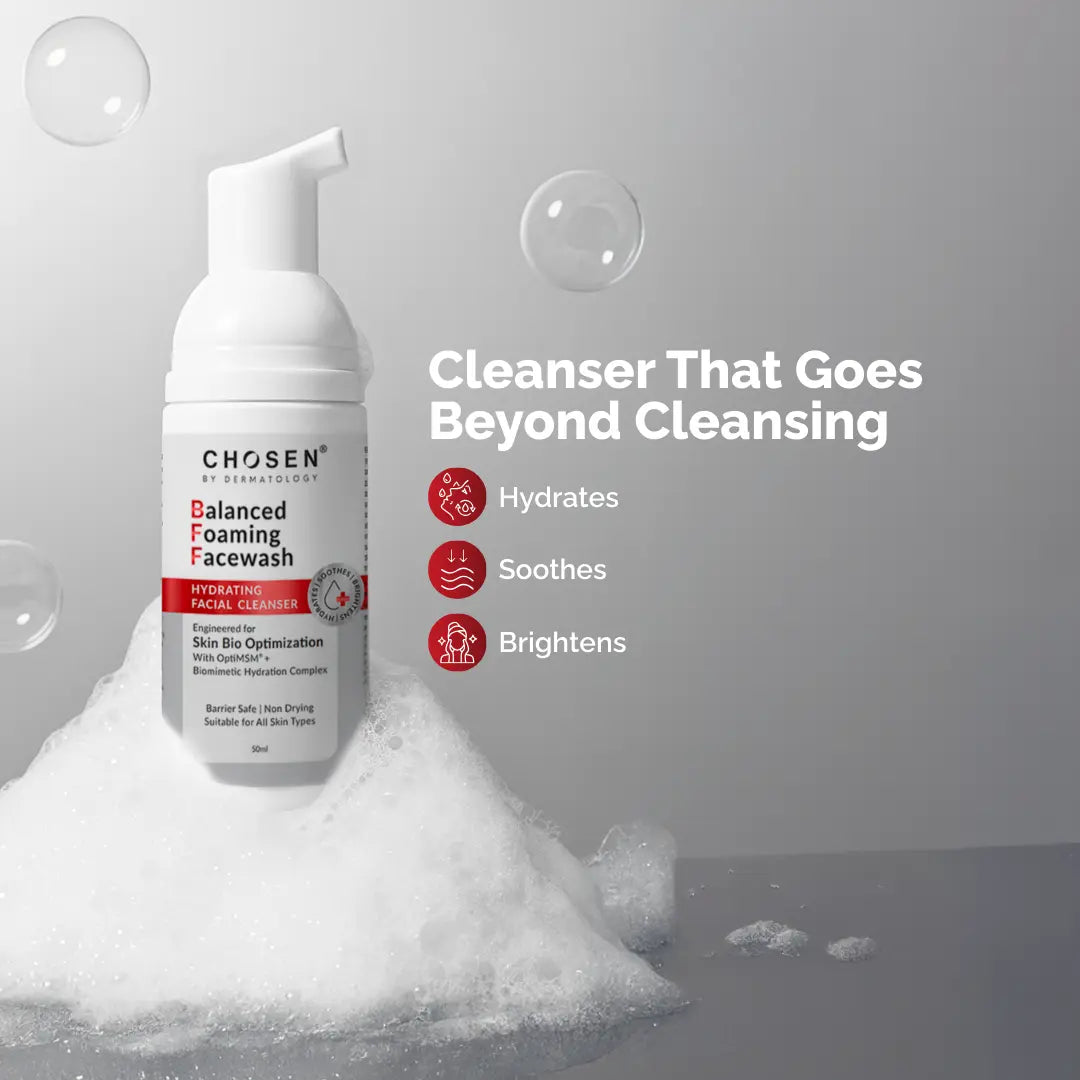If you're reading this, you probably already know that India's air quality is concerning. You've seen the headlines about all 40 of the world's most polluted cities being in India. You check AQI readings. You understand PM2.5 isn't just a number - it's particulate matter small enough to penetrate biological systems.

But here's what might surprise you: while most discussions focus on respiratory and cardiovascular effects, your skin - as the body's largest organ and first line of environmental defense - is taking significant, measurable damage that we're only beginning to fully understand.
Let's talk about what's actually happening.
The Current Reality
As of November 1st week, 2025, India's average AQI sits at 178, with PM2.5 levels at 93 μg/m³ and PM10 at 129 μg/m³. To put that in perspective, the WHO guideline for PM2.5 is 5 μg/m³ annual mean. We're operating at more than 13 times that threshold daily.

The Bombay High Court recently questioned whether sustainable solutions exist, or if annual pollution spikes are simply India's new normal. Meanwhile, healthcare providers across Delhi-NCR report increasing dermatology consultations for pollution-attributable conditions.
Unfortunately, this is not once-off, but a pattern that returns every year!
Understanding the Mechanisms
When we talk about pollution affecting skin, we're talking about specific, documentable mechanisms at play.
Oxidative Stress and Free Radical Formation
Airborne pollutants - particularly PM2.5, ozone, and nitrogen dioxide - generate reactive oxygen species (ROS) in skin tissue. Research shows that even short-term exposure to atmospheric pollutant levels depletes cutaneous antioxidants including vitamin C, vitamin E, and glutathione in the stratum corneum and upper epidermis.

This oxidative stress triggers lipid peroxidation in the skin's protective lipid barrier. When squalene (a major sebum component) oxidizes, it produces comedogenic compounds. This is why pollution doesn't just age skin - it actively contributes to acne formation.
Inflammatory Cascade Activation
Clinical studies demonstrate clear correlations between ambient PM2.5 and NO₂ levels and inflammatory markers in skin tissue.
Pollutants activate the aryl hydrocarbon receptor (AhR) pathway, leading to upregulation of pro-inflammatory cytokines including IL-1α, IL-6, and TNF-α, plus increased expression of matrix metalloproteinases, enzymes that degrade collagen.
And when this happens daily, collagen breakdown and skin aging happens at an accelerated level.
Barrier Dysfunction
Your skin barrier isn't just a physical wall. It's a complex system of ceramides, cholesterol, fatty acids, tight junction proteins, and natural moisturizing factors. Pollution disrupts all of these.
Specifically, pollutant exposure:
-
Decreases filaggrin expression (critical for barrier formation)
-
Reduces ceramide synthesis
-
Disrupts tight junction proteins like claudin-1
-
Increases transepidermal water loss (TEWL)
-
Elevates skin surface pH

A compromised barrier doesn't just feel uncomfortable, it becomes more permeable to subsequent pollutant exposure. It's a compounding problem.
The Microbiome Angle
Recent research on chronic exposure to polycyclic aromatic hydrocarbons reveals something interesting: pollution alters the composition of skin microbiota. Specifically, it affects populations of Propionibacterium (now called Cutibacterium acnes) and Malassezia - the microorganisms directly implicated in acne vulgaris and seborrheic dermatitis.

This helps explain the increase in these conditions in heavily polluted urban environments. The environmental stressor is literally changing the microbial ecosystem on your skin.
The Indian Context
What makes India's situation particularly challenging is the consistency of exposure. This isn't an occasional bad air day. October 30, 2025, marked an unprecedented milestone: every single one of the world's 40 most polluted cities was located in India.
For people living in Delhi, Mumbai, Bangalore, or increasingly, smaller cities experiencing rapid industrialization - exposure has now become a routine.
Think about daily patterns:
-
Morning commute: 30-90 minutes in traffic (exposure)
-
Daytime: Indoor/outdoor activities (exposure)
-
Evening commute: Another 30-90 minutes (exposure)
-
Overnight: Unless you're running HEPA filtration, some exposure continues

By the time you're aware skin feels "off," the cumulative oxidative damage, inflammatory signaling, and barrier disruption have already occurred.
What Actually Works (Evidence-Based Approach)
Given the mechanistic understanding of pollution-induced skin damage, this is how you can protect your skin.
The Cleansing Imperative
Here's the challenge: You need to remove oil based pollutants and surface debris without further compromising an already-stressed barrier. Harsh cleansing damages the barrier, paradoxically making skin more vulnerable to pollutant penetration. Insufficient cleansing leaves oxidative compounds on skin, continuing damage.
The solution requires formulations that:
-
Effectively solubilize lipophilic pollutants
-
Maintain physiological pH (4.5-5.5)
-
Support barrier repair mechanisms
-
Provide anti-inflammatory activity
-
Don't require aggressive mechanical action

This is where dermatologist-designed formulations like CHOSEN Balanced Foaming Facewash become relevant. It's specifically formulated for this balance: barrier-friendly surfactants that cleanse effectively without stripping, combined with actives that address the inflammatory component.
OptiMSM (Methylsulfonylmethane) provides documented anti-inflammatory activity through NF-κB pathway modulation, directly addressing the inflammation pollution triggers.
Biomimetic Hydration Complex is the interesting part. Rather than just depositing occlusive agents, it supports endogenous production of ceramides, hyaluronic acid, and natural moisturizing factors. This helps to rebuild whatever pollution removes from your skin.
The foaming delivery system is practical; it provides good coverage without requiring friction that could further stress compromised skin.
The Timing Question
When you cleanse matters almost as much as what you use.
Morning cleansing prepares skin and removes overnight oxidative debris. Follow with sunscreen - critical, because UV radiation and pollution have synergistic effects on oxidative damage.
Evening cleansing should happen immediately upon returning indoors, not at bedtime. Every hour pollutants remain on the skin extends oxidative stress and inflammatory signaling. The moment you're home, remove the day's exposure.
For those with particularly high exposure - outdoor workers, long commuters, athletes - a third cleanse after high-sweat activities may be warranted.
The Sunscreen Non-Negotiable
Broad-spectrum sun protection isn't optional in polluted environments. UV radiation and pollution synergistically increase oxidative damage. The combination accelerates photoaging beyond what either factor would cause alone. Look for sunscreens that offer this level of protection. Use it every morning, even when air appears hazy - UV penetrates cloud cover and smog.
The Practical Reality
You can't control Graded Response Action Plans. You can't prevent stubble burning in Punjab. You can't shut down industrial emissions.
But you can control what happens when you come home every day.
The current evidence supports this: proper barrier-friendly cleansing, used consistently at key exposure points, combined with broad-spectrum sun protection, represents the most practical, accessible intervention for pollution-induced skin damage.
This is one supportive way, in which you can try to mitigate daily exposure to particulate matter levels at 13 times above WHO guidelines.
Moving Forward
India's air quality crisis isn't resolving soon. The Bombay High Court's question about whether sustainable solutions exist reflects the complexity of the challenge - it involves agriculture, industry, urban planning, and policy at every level.
While those systemic changes work their way through (or don't), individual protection strategies matter. Not as a substitute for demanding better air quality, but as parallel necessity.
Your skin barrier is doing its job, defending against environmental assault. The question is whether you're supporting it in that work, or unknowingly making it harder through inadequate cleansing or barrier-damaging products.
The choice, in this one area, is actually yours to make.
For persistent or treatment-resistant skin conditions, consult a board-certified dermatologist. Individual responses to environmental stressors vary based on genetic factors, existing conditions, and overall skin health.


